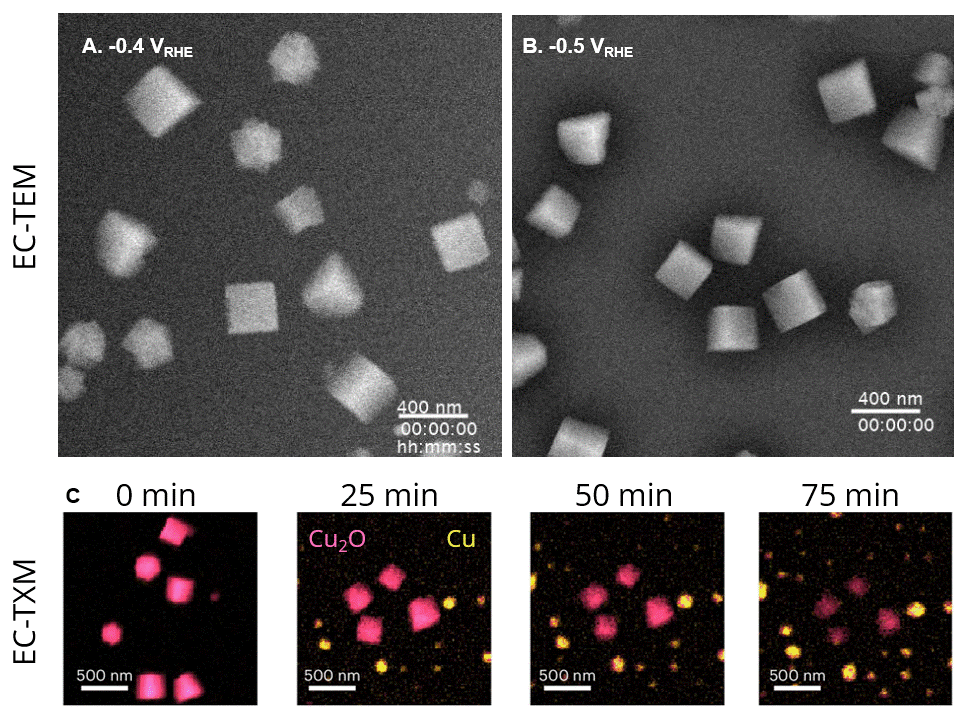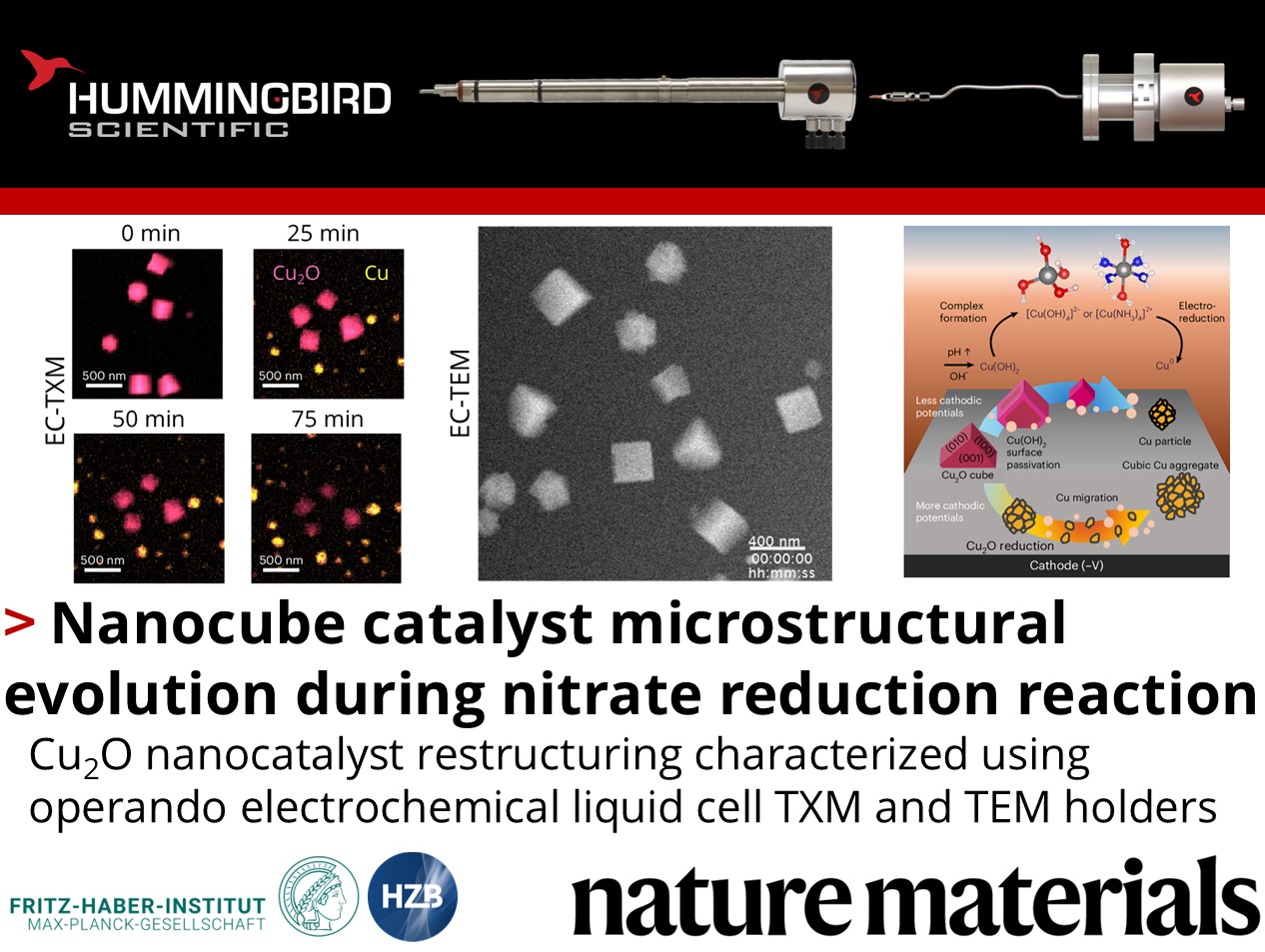How does the nitrate reduction reaction alter the microstructure of catalyst nanocubes?
Aram Yoon, See Wee Chee, Beatriz Roldan Cuenya, and their colleagues at the Fritz-Haber Institute of the Max-Planck Society and Helmholtz-Zentrum Berlin published recent work utilizing three Hummingbird Scientific sample holders to characterize Cu2O nanocube catalyst restructuring and chemical changes under the nitrate reduction reaction (NO3RR). Liquid electrochemical transmission electron microscopy (EC-TEM) performed in the Generation V bulk liquid-electrochemical TEM sample holder was correlated to liquid electrochemical transmission X-ray microscopy (EC-TXM) performed in the Generation V bulk liquid-electrochemical X-ray sample holder, hard X-ray absorption spectroscopy, and Raman spectroscopy. Ex-situ TEM imaging of the nanocubes is performed using the tomography TEM sample holder.

a) EC-TEM movie showing the structural changes in the Cu2O cubes over 2 hours of chronoamperometry at -1.0 VAgAgClin 0.1 M Na2SO4 + 8 mM NaNO3. -1.0 VAgAgClconverts to -0.4 VRHE. b) EC-TEM movie showing the structural changes in the Cu2O cubes over 2 hours of chronoamperometry at -1.1 VAgAgCl in 0.1 M Na2SO4 + 8 mM NaNO3. -1.1 VAgAgCl converts to -0.5 VRHE. The movie playback rate is ×200 times real time in A and B. c) Spatially and temporally evolving copper catalysts as observed with TXM. © 2025, The Author(s). Published by Springer Nature Limited. This article is licensed under CC-BY 4.0.
Nanocubes evolved under NO3RR in distinct catalyst motifs that depend on the applied potential and the chemical environment. Under the correct conditions, Cu2O was stabilized alongside metallic copper for extended durations under moderately reductive conditions due to surface hydroxide formation, boosting ammonia selectivity at -0.6 VRHE. The correlation of time-resolved spectroscopy and operando electron microscopy enabled by the Hummingbird Scientific liquid electrochemical suite allowed morphological evolution to be linked to catalytic mechanisms under operating conditions. The work demonstrates the benefit of correlative operando characterization methods to the optimization of nanocatalyst and reaction environment design.
Reference: Aram Yoon, Lichen Bai, Fengli Yang, Federico Franco, Chao Zhan, Martina Rüscher, Janis Timoshenko, Christoph Pratsch, Stephan Werner, Hyo Sang Jeon, Mariana Cecilio de Oliveira Monteiro, See Wee Chee & Beatriz Roldan Cuenya, Nature Materials (2025) DOI: 10.1038/s41563-024-02084-8
Full paper Copyright © 2025, The Author(s). Published by Springer Nature Limited. This article is licensed under CC-BY 4.0.
View All News

